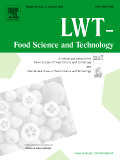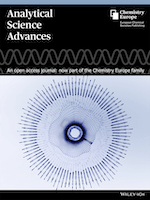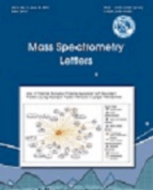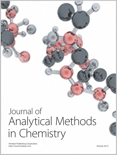
Food Analytical Methods
Scope & Guideline
Empowering researchers to enhance food safety standards.
Introduction
Aims and Scopes
- Analytical Method Development:
The journal emphasizes the creation and refinement of analytical techniques, such as chromatography, mass spectrometry, and spectroscopy, to improve the detection and quantification of food constituents and contaminants. - Food Safety and Quality Assessment:
Research published in this journal frequently addresses methods for assessing food safety, including the detection of pathogens, mycotoxins, pesticides, and other harmful substances to ensure consumer protection. - Authenticity and Traceability:
A significant focus is placed on techniques that verify the authenticity of food products, including geographical origin determination and the detection of food adulteration. - Nutritional Analysis and Bioactive Compounds:
Studies often investigate the nutritional content of food products, including the assessment of vitamins, minerals, and bioactive compounds that contribute to health benefits. - Innovative and Sustainable Extraction Techniques:
The journal promotes research on environmentally friendly extraction methods for isolating bioactive compounds from various food sources, utilizing techniques that minimize solvent use and enhance yield.
Trending and Emerging
- Machine Learning and AI Applications:
There is a rising trend in employing machine learning and artificial intelligence for data analysis and predictive modeling in food safety and quality assessment, showcasing the integration of computational tools into analytical practices. - Nanotechnology in Food Analysis:
Studies utilizing nanomaterials and nanotechnology for food detection and analysis are increasingly prevalent, indicating a shift towards more sensitive and efficient analytical methods. - Multiresidue and Multiclass Detection Methods:
Research focused on the simultaneous detection of multiple residues (e.g., pesticides, veterinary drugs) in food matrices is gaining traction, reflecting the need for comprehensive food safety assessments. - Sustainability and Green Analytical Chemistry:
There is a growing emphasis on sustainable practices in food analysis, including the development of eco-friendly extraction methods and the use of renewable resources, aligning with global sustainability goals. - Real-time and Non-destructive Testing Methods:
Emerging methodologies that allow for real-time monitoring and non-destructive testing of food products are trending, reflecting consumer demand for immediate quality assessment and safety verification.
Declining or Waning
- Traditional Analytical Techniques:
There is a noticeable reduction in the publication of studies solely focused on traditional analytical methods, such as basic spectrophotometry or standard chemical assays, as newer, more sophisticated techniques gain preference. - General Food Chemistry Studies:
Research that broadly covers food chemistry without a specific application or targeted analysis appears to be decreasing, indicating a trend towards more specialized and application-driven studies. - Static and Non-advanced Detection Methods:
The journal has seen fewer contributions involving static or less innovative detection methods, such as basic visual assessments, as researchers increasingly adopt advanced technologies like machine learning and real-time monitoring.
Similar Journals

CHINESE JOURNAL OF ANALYTICAL CHEMISTRY
Fostering Scientific Inquiry in Analytical ChemistryCHINESE JOURNAL OF ANALYTICAL CHEMISTRY, published by SCIENCE PRESS in China, stands as a prominent platform in the field of analytical chemistry since its inception in 1989. With its ISSN 0253-3820 and E-ISSN 1872-2040, the journal maintains a vital role in disseminating empirical research and innovative methodologies, contributing to the advancement of analytical techniques and their applications. The 2023 Scopus ranking positions the journal in the third quartile (Q3) within its category, reflecting a respectable standing among its peers. Researchers, professionals, and students alike engage with a broad range of topics, from instrumental analysis to environmental monitoring, each aiming to foster further scientific inquiry. Although it does not currently offer Open Access, the journal's rich repository of knowledge continues to be an essential resource for those in the analytical chemistry community, with an enduring commitment to scientific excellence and collaboration.

LWT-FOOD SCIENCE AND TECHNOLOGY
Innovating solutions for contemporary food challenges.LWT - Food Science and Technology is a premier academic journal published by Elsevier, specializing in the multifaceted fields of food science and technology. With a distinguished presence since its inception in 1973, this journal has evolved to become a vital resource for researchers and professionals aiming to advance knowledge in food safety, preservation, processing, and sensory analysis. Currently ranked in the Q1 quartile of food science journals, it holds an impressive Scopus ranking of 22 out of 389 in the Agricultural and Biological Sciences category, placing it in the 94th percentile. While certain articles may be available via subscription, LWT is committed to disseminating cutting-edge research that enhances food quality and innovation. This journal not only serves as a critical platform for the exchange of scientific ideas but also addresses contemporary challenges in food technology, ensuring that it remains essential for scholars, industry professionals, and students alike seeking to contribute to and stay abreast of advancements in the field.

Analytical Science Advances
Unveiling Insights in Analytical Techniques and InstrumentationAnalytical Science Advances is a dynamic journal published by WILEY, dedicated to the ever-evolving field of analytical chemistry. With an ISSN of 2628-5452, this open-access platform aims to disseminate high-quality research and insightful reviews that push the boundaries of analytical methodologies and instrumentation. Since its inception in 2020, the journal has gained traction, securing a commendable Q2 ranking in 2023 within its category, highlighting its significance in the scientific community. Currently positioned at Rank #68 out of 156 in Scopus' analytical chemistry category, it boasts a 56th percentile ranking, reflecting its contributions to advancing analytical techniques. Researchers, professionals, and students will find this journal an invaluable resource for keeping abreast of the latest developments, emerging technologies, and innovative approaches in analytical science, ensuring the journal's relevancy and influence in shaping future discoveries.

Mass Spectrometry Letters
Pioneering Insights in Biochemistry and Spectroscopy.Mass Spectrometry Letters is a pioneering open-access journal published by the Korean Society for Mass Spectrometry, specializing in the diverse fields of analytical chemistry, biochemistry, and spectroscopy. Established in 2010, this journal aims to disseminate groundbreaking research and advancements in mass spectrometry and its applications across various scientific domains. Though currently categorized in the Q4 quartile in key analytical fields, Mass Spectrometry Letters serves as an essential platform for researchers, professionals, and students to share innovative methodologies, emerging trends, and practical applications of mass spectrometry, thus fostering collaboration and advancing knowledge in the scientific community. With a commitment to open access, articles published since 2010 are readily available, enabling widespread distribution and engagement within the international research community. Located in Daejeon, South Korea, and actively converging research through 2024, the journal holds the potential to grow its impact and relevance within the dynamic landscape of mass spectrometry.

MICROCHEMICAL JOURNAL
Advancing the Frontiers of Microchemical ResearchMicrochemical Journal, published by Elsevier, stands as a leading scholarly publication in the fields of Analytical Chemistry and Spectroscopy, boasting impressive rankings of Q1 and Q2 in their respective categories for 2023. With an H-index reflecting its substantial impact and relevance, this journal has been a cornerstone of research dissemination since its inception in 1957, and it continues to play a vital role in advancing the methodological and technological innovations within these disciplines. The journal presents peer-reviewed articles that explore a wide array of topics, making it an essential resource for researchers, professionals, and students keen on the latest advancements in microchemical processes and techniques. Although it does not currently offer open access options, its publication through Elsevier ensures a high standard of academic integrity and wide accessibility through various academic institutions. With a strong Scopus ranking—9th in Chemistry Spectroscopy and 22nd in Analytical Chemistry—Microchemical Journal is an indispensable platform for empirical studies, insightful reviews, and pioneering methodologies in the microchemical domain.

Journal of Analytical Methods in Chemistry
Connecting theory and practice for a brighter scientific future.The Journal of Analytical Methods in Chemistry, published by HINDAWI LTD, stands as a premier platform dedicated to the dissemination of research in the vibrant field of analytical chemistry. With an ISSN of 2090-8865 and an E-ISSN of 2090-8873, this Open Access journal has been committed to providing unrestricted access to quality research since 1978, thereby fostering greater collaboration and innovation among researchers, professionals, and students globally. The journal showcases rigorous research insights spanning diverse categories, earning impressive Scopus rankings including Q2 in Chemical Engineering and Q3 in Analytical Chemistry for 2023, positioning itself effectively among respected peers. Its interdisciplinary approach also covers significant contributions in the realms of instrumentation and computer science applications, thus addressing contemporary challenges and advancements in analytical methodologies. By bridging theoretical underpinnings with practical applications, the Journal of Analytical Methods in Chemistry aims to catalyze knowledge exchange while enhancing the global discourse in analytical science.

LCGC EUROPE
Exploring the forefront of chromatographic techniques in Europe.LCGC EUROPE is a prominent journal dedicated to the field of analytical chemistry, specifically highlighting the latest trends and innovations in chromatographic techniques. Published by MJH Life Sciences, this journal has served as a valuable resource for researchers, professionals, and students interested in the nuances of laboratory practices and the advancement of instrumentation. Although LCGC EUROPE ceased its coverage in Scopus from 2018, it has maintained a significant influence within the community, evidenced by its Scopus rank of 90/114 in Analytical Chemistry, placing it in the 21st percentile. With its inception dating back to 1996, the journal provided essential insights and peer-reviewed articles, fostering a rich understanding of chromatographic science. While the journal is not currently open access, it remains an integral part of the literature for anyone engaged in the analytical chemistry landscape, especially as it pertains to laboratory methodologies and innovations.

Applied Food Research
Exploring the Frontiers of Food Safety and NutritionApplied Food Research, published by Elsevier, is an esteemed journal that plays a critical role in advancing the field of Food Science. With an ISSN of 2772-5022, the journal has established itself as a premier outlet for high-quality research, achieving a commendable Q1 ranking in the 2023 Food Science category and a 63rd percentile in Scopus rankings for Agricultural and Biological Sciences. Covering a diverse range of topics from food safety to innovative processing techniques, Applied Food Research seeks to publish pioneering studies that enhance our understanding of food systems and contribute to broader discussions on sustainability and nutrition. As it converges on its fourth year of publication, researchers, professionals, and students alike are encouraged to engage with its content through various open access options, ensuring widespread dissemination of knowledge in a field that is vital to global health and well-being. Operating out of Amsterdam, Netherlands, this journal is poised to be an indispensable resource for anyone dedicated to making significant contributions in the domain of food science.

Brazilian Journal of Analytical Chemistry
Fostering Innovation in Analytical Chemistry ResearchBrazilian Journal of Analytical Chemistry, published by VISAO FOKKA COMMUNICATION AGENCY, serves as a vital platform for those engaged in the field of analytical chemistry, especially within the Latin American context. With an ISSN of 2179-3425 and an E-ISSN of 2179-3433, this journal aims to promote high-quality research and advancements in analytical methodologies, instrumentation, and applications spanning from 2010 to the present. Although it currently holds a Q4 rank in Analytical Chemistry by Scopus and is placed at the 24th percentile, its commitment to open access publishing provides invaluable opportunities for widespread dissemination of knowledge, catering to researchers, professionals, and students alike. The journal's editorial board comprises emerging and established experts aiming to bridge gaps in analytical chemistry research, particularly in a Brazilian and broader South American context. Situated in São Paulo, Brazil, the journal's role in fostering innovation and collaboration in analytical techniques makes it an essential resource for the academic community.

ACS Food Science & Technology
Transforming Food Science Through Innovative ResearchACS Food Science & Technology is a premier peer-reviewed journal published by the American Chemical Society (ACS) that addresses the dynamic intersections of food science, chemistry, and technology. With its E-ISSN: 2692-1944, this journal aims to disseminate innovative research and comprehensive reviews that enhance understanding in fields such as analytical chemistry, organic chemistry, and general food science. Despite the absence of an Open Access model, its position in the Q2 quartile for multiple categories in 2023 underscores its significant impact on the scholarly landscape, ensuring researchers can access high-quality research pertinent to today's food challenges. With an expanding timeline of 2021 to 2024, ACS Food Science & Technology is poised to be an essential resource for advancing the scientific community's knowledge, fostering collaboration, and bridging gaps between academia and industry.